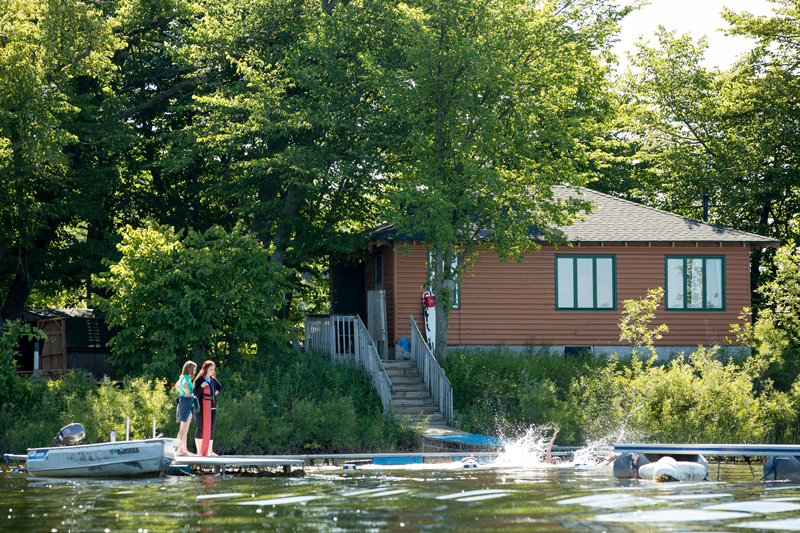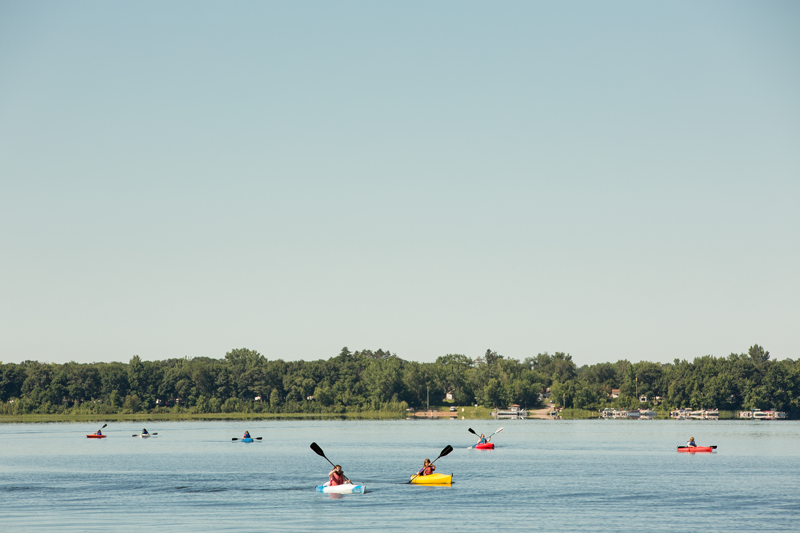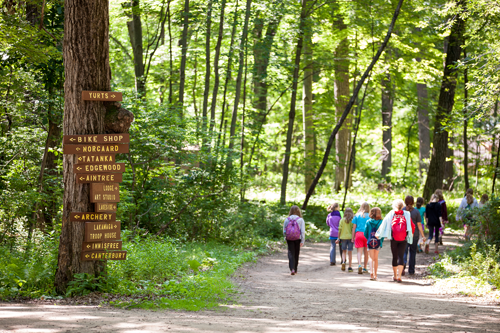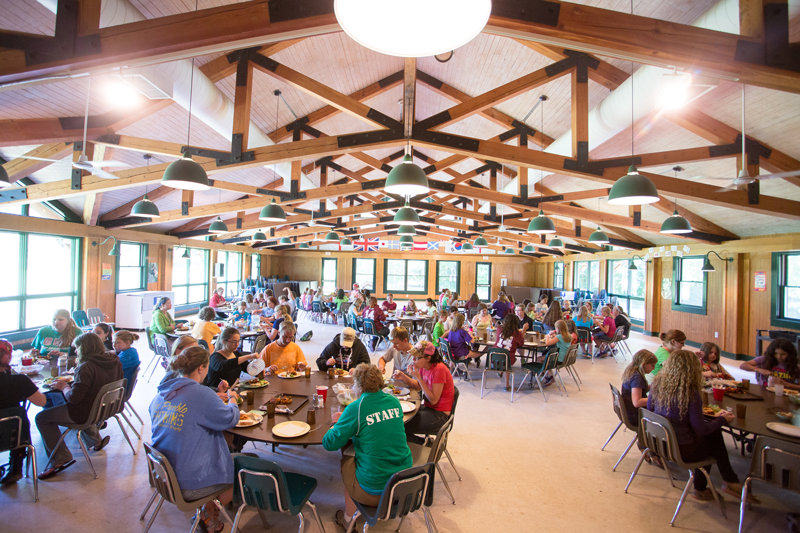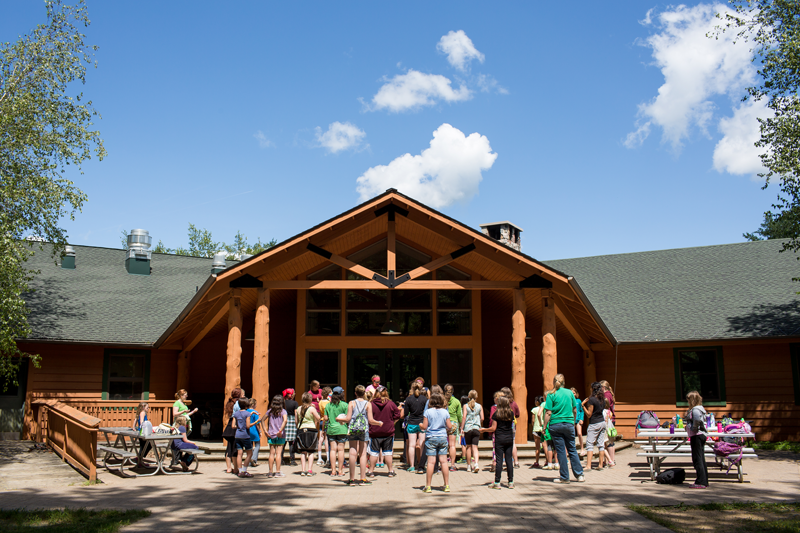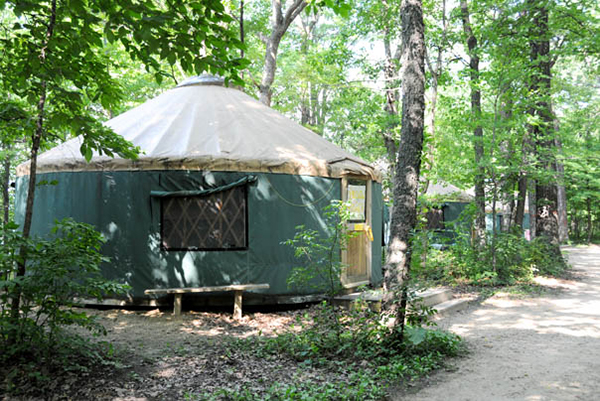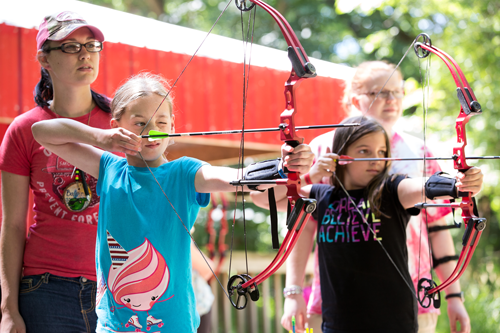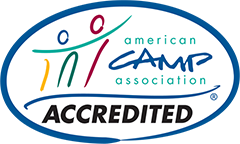From the forest to the lake, and from the prairies to the wetlands, campers enjoy Camp Lakamaga’s beautiful 170 acres through a variety of safe and fun activities.
Campers who love water activities choose Camp Lakamaga year after year. In addition to all of its water fun, Camp Lakamaga offers the full camp experience, whether you attend summer camp or an off-season adventure.

Some of Camp Lakamaga summer attractions include:
- Archery
- Art activities
- Biking
- Canoeing
- Kayaking
- Key log rolling
- Low ropes course
- Outdoor skills
- Pontoon riding
- Sailing
- Science activities
- Swimming
- Tent camping
Housing
No matter where you stay on camp, you’ll find a cozy place to rest your head and call home for your visit. Camp Lakamaga has a variety of housing, and the type of housing for campers or groups will vary and depend on the session they attend.
- Lakamaga yurts (a cross between a cabin and a tent) have bunk beds for twelve campers, a domed skylight, and screened windows and doors.
- Three-season cabins have two screened walls, electricity and sleep six campers.
- Four-season cabins have bunk beds, sleep six campers.
Photos
Click any photo below to open a slideshow:
Address & Directions
Camp Lakamaga is less than a one hour drive (40 miles north) from the Twin Cities.
12303 Lakamaga Trail N
Marine on St. Croix, MN 55047
Directions from the West, South, and North
- Take I-35 to Highway 97 (2 miles south of Forest Lake).
- Exit Highway 97 and follow east to Lofton Ave N (about 8.5 miles).
- Turn right (south) onto Lofton Ave N (.25 miles) and turn right onto Maxwill Ave.
- Once on Maxwill Ave., go about 1.25 miles to a stop sign. The entrance to Lakamaga is across from this intersection.
Directions from the East
- Take Highway 95 north from Stillwater (or north on Highway 95 from I-94 near the Hudson Bridge) to Highway 96 (near Scandia).
- Take Highway 97 west 4.5 miles to Lofton Ave N.
- Turn left (south) onto Lofton Ave N, and turn right onto Maxwill Ave.
- Once on Maxwill Ave, go about 1.25 miles to a stop sign. The entrance to Lakamaga is across from this intersection.
Maps
View on Google Maps. Use caution navigating to Camp Lakamaga via Google Maps! Please follow the directions provided above.
| Collapse All
The History of Camp Lakamaga
1926
Local Boy Scouts started using the land as a camp and called it Lakamaga. The land was originally the Rask Farm, one of the oldest Swedish settlements in Minnesota. Boy Scouts would travel to Lakamaga by train from Saint Paul to Copas, a tiny village near Marine, and hike the rest of the way to camp.
Fun fact: “Lakamaga” was meant to mean “Big Lake” in Latin but is actually a poor translation!
1927
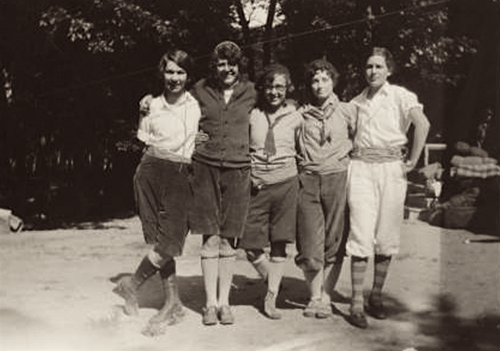
1930
The Girl Scouts bought Camp Lakamaga and began tailoring it to their vision by first building a lodge, a beautiful log cabin that served as the original dining hall and program center. The lodge was right on the lakeshore, making the swimming beach easily accessible. Girl Scouts also constructed the Edgewood building to serve as the original infirmary, and it still serves as the health center during camp season!
Fun fact: Back then, one week of Girl Scout Camp cost $8.50 and a two-week session cost $17. What a deal!
1940’s
In the early days, Girl Scouts slept in simple tents, so when platform tents were introduced to Lakamaga, they were considered very luxurious with wooden floors and frames.
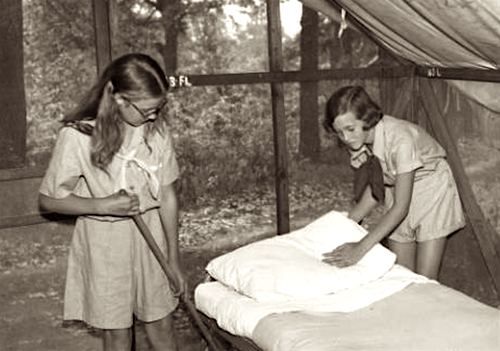
2000
Local Girl Scouts led a massive campaign to improve Lakamaga facilities. At 10,000 square feet, the Annie Paper Dining Hall was the largest building that came from this campaign, as well as Agnes Ober Program Center and Coya Knutson Sports Pavilion. The Lodge was converted into a program center, which serves as the art building for camp today.
2006
Girl Scouts built yurts based on a traditional Mongolian housing style. The Aintree unit was equipped with several beautiful log cabins.
Fun Fact: “Aintree” used to be called “portage” because there wasn’t originally a road to it and campers needed to carry in their supplies and gear. Similar cabins can be found at the Lochbrae Unit, which is Scottish for a “slope by the lake.”
2020
Three additional yurts and six permanent outdoor shelters were built at camp, increasing activity space. Up to eight hammocks can be clipped into the new hammock weaver station.
Today
The story of Camp Lakamaga continues—be a part of its living history!
